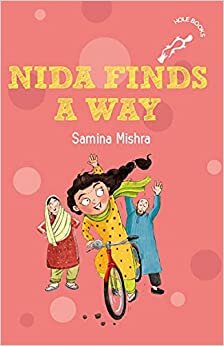Process Talk: Samina Mishra on the Agency of Children
Here’s my continuing conversation with writer and filmmaker Samina Mishra.
Photo courtesy of Samina Mishra
[Uma] Jamlo Walks is heartbreaking. I wanted so desperately for her to get home. At the same time, I wanted the other kids to hear her story, to see the unfairness of it, to peel back those layers of reality, when the reality of lockdown during the pandemic was so different for each of them. How did you decide on this structure of interwoven experiences?
[Samina] The structure was the first thing that came into my head – while Jamlo was walking, what were other children doing? The very first draft came in that structure. I think this comes from my practice as a documentary filmmaker and how we are constantly thinking about subjectivity. It also comes from the kind of work I have been doing with and for children that has tried to encourage dialogue and build connections through the everyday.
[Uma] Making that intuitive here?
[Samina] I do think the decision was not a very conscious one but rather emerged from a distilling of earlier practice. To create art, one has to live and engage with the world and the ways in which we do that feed into the work we create. I think the structure of this book is an example of that process.
[Uma] Children live in the real world, yet it’s a world they haven’t had a hand in building—or destroying, if it comes to that. What’s our job as writers for children, do you think, in these most difficult times?
[Samina] Writers who write for children need to listen to them and translate their experiences into stories that reflect their lives back to them so that they can make better sense of the world. We need to show them their strength because children are resilient and there is much that adults can learn from that. We need to stop patronizing them and challenge our notions of agency. And we need to always show them hope and possibility. The world feels like it’s broken but when I see how children and young people are responding to issues of the environment or the easy way in which they accept sexual diversity, then I think it’s not completely broken. Even in the pandemic while we have seen the ugly grasping and uncaring facets of humanity, we have also seen examples of great selflessness. We need to remember those otherwise how can we continue to struggle for a better, more equitable world. We need to show children that both are possible and that even in the most difficult circumstances, we get to choose our actions and who we want to be.
[Uma] I had lots of reasons to like Nida, but I think I really took to her because of the cycling. Confession: I came very late to riding a bicycle in my own life. Nida’s story made me wish that, even as a grownup, I’d had that safe space of a terrace roof to practice. Then it struck me that in a way, reading a book is a safe little terrace space in which children can imagine being brave, to allow themselves to think about finding their own way. What do you want child readers to take away from this book?
[Samina] That is such a lovely way to look at a book! You are absolutely right – a book is a safe space to try out your fantasies. I hope Nida’s story encourages readers to remain curious about the world, to hold on to their desires, to believe that they will always find a way. I also hope it entices them into the pleasures of reading and allows them to experience how literature can shift our perspective of the world. I think we must all have art in our lives – the pleasure it brings, the beauty even if it is a dark and sad kind of beauty. But for that we have to have that first experience when you just LOVE something you read or see, and then it sets you off on a journey for more. I would be so happy if Nida Finds a Way became that experience for some.
[Uma] I’ll remember this: “…we get to choose our actions and who we want to be.” Thank you, Samina.


